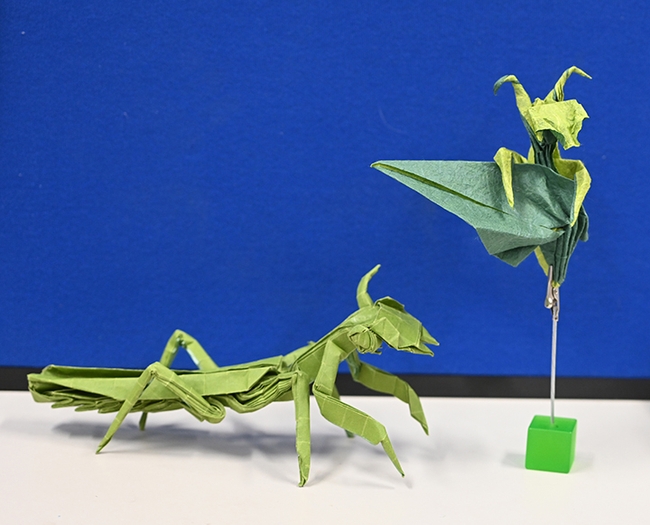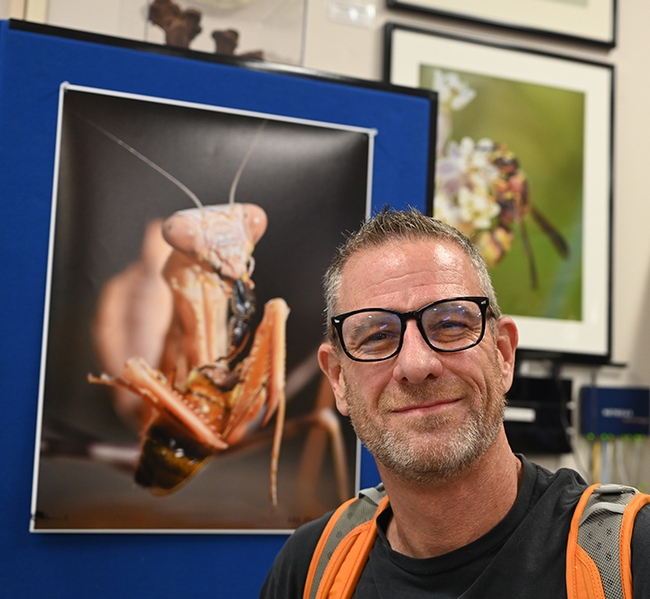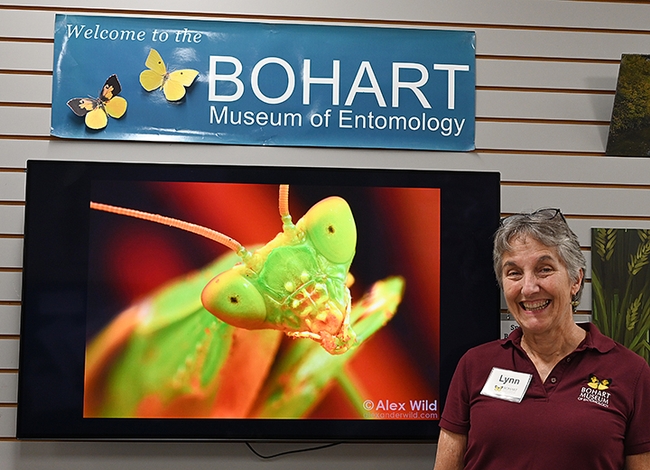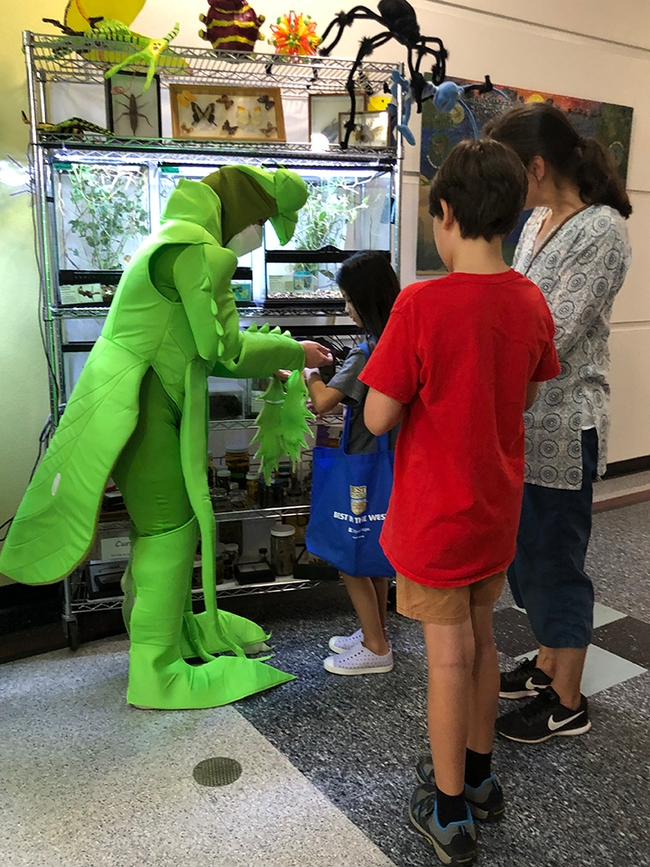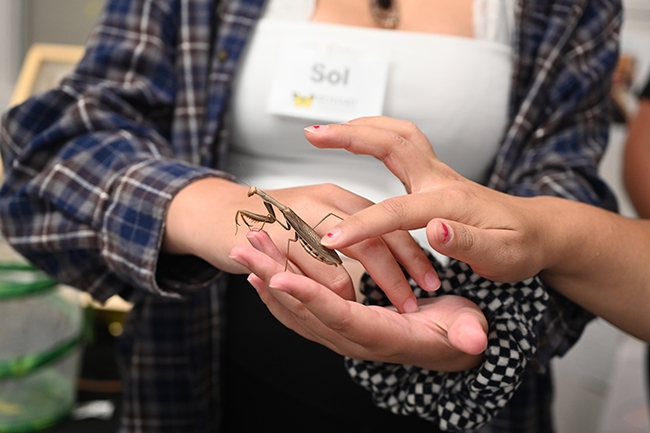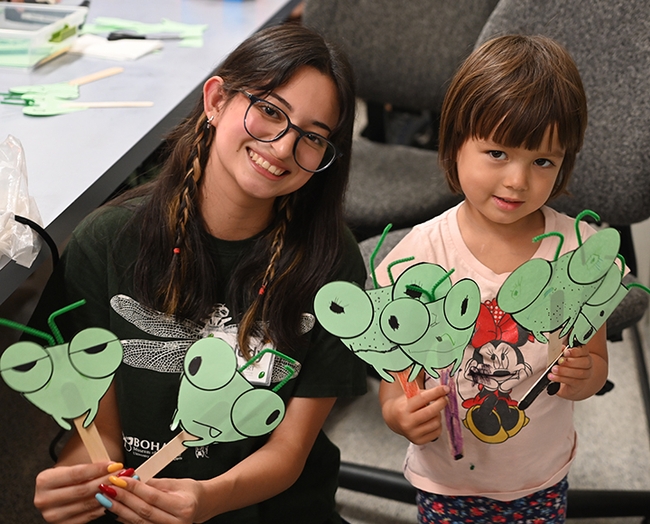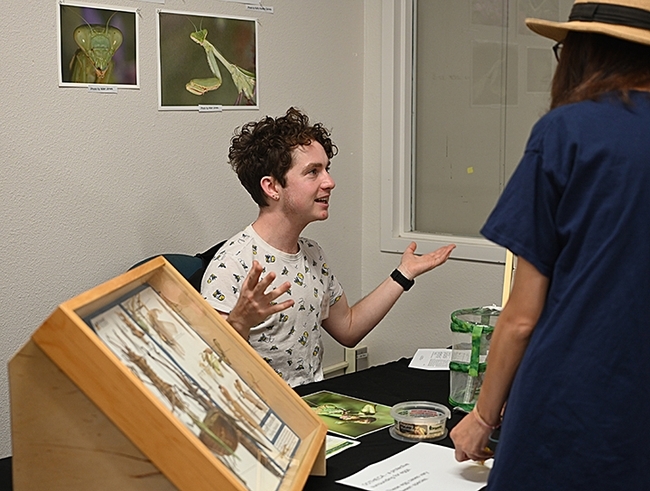- Author: Kathy Keatley Garvey
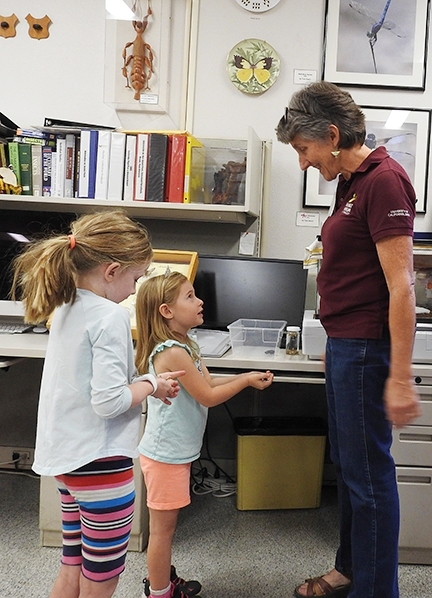
The event, set for Saturday, Feb. 10, will feature 10 museums or collections:
- Anthropology Museum, 328 Young Hall and grounds, open from noon to 4 p.m.
- Arboretum and Public Garden, Habitat Gardens in the Environmental GATEway, adjacent to the Arboretum Teaching Nursery on Garrod Drive, 10 a.m. to 2 p.m.
- Bohart Museum of Entomology, Room 1124 and main hall of the Academic Surge Building, 455 Crocker Lane, 10 a.m. to 2 p.m.
- Botanical Conservatory, the greenhouses along Kleiber Hall Drive, 10 a.m. to 2 p.m.
- California Raptor Center, 1340 Equine Lane, off Old Davis Road, 9 a.m. to 3 p.m.
- Center for Plant Diversity, Katherine Esau Science Hall off Kleiber Hall Drive, 10 a.m. to 2 p.m.
- Nematode Collection, Katherine Esau Science Hall, off Kleiber Hall Drive, 10 am. to 2 p.m..
- Museum of Wildlife and Fish Biology, Room 1394, Academic Surge Building, 455 Crocker Lane, 10 a.m. to 2 p.m.
- Paleontology Collection, Department of Earth and Planetary Sciences, 1309 Earth and Physical Sciences Building, 434 LaRue Road, 10 a.m. to 2 p.m.
- Phaff Yeast Culture Collection, Robert Mondavi Institute Brewery and Food Processing facility, Old Davis Road, 10 a.m. to 2 p.m.
Each year more than 200 volunteers--students, staff and faculty--from across campus help more 4,000 visitors--including other UC Davis students, staff and faculty--"learn about biodiversity through our amazing biological collections," said UC Davis Biodiversity Museum Day chair Tabatha Yang, education and outreach coordinator for the Bohart Museum of Entomology.
The Bohart Museum founded UC Davis Biodiversity Museum Day.
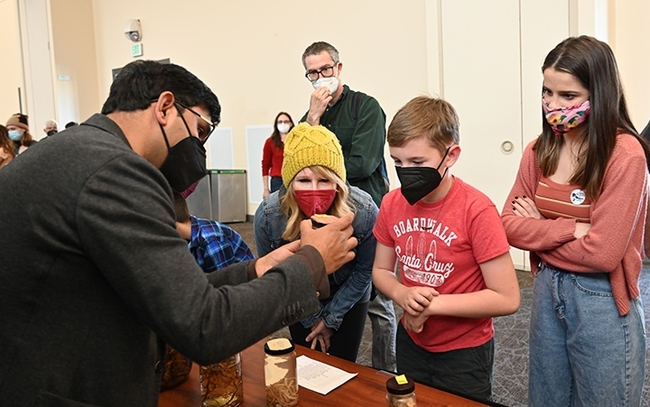
- Author: Kathy Keatley Garvey
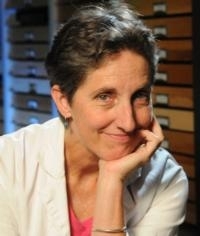
The schedule:
Saturday, Jan. 20:
"Social Wasps," 1 to 4 p.m., featuring UC Davis distinguished professor Lynn Kimsey, director of the Bohart Museum. She recently received the 2023 Exceptional Faculty Award from the College of Agricultural and Environmental Sciences. Kimsey, a recognized authority on insect biodiversity, systematics and biogeography of parasitic wasps, urban entomology, civil forensic entomology, and arthropod-related industrial hygiene, is a 34-year member of the UC Davis entomology faculty. She has directed the Bohart Museum since 1990. She plans to retire in 2024. (See news story)
Saturday, Feb. 10:
13th Annual Biodiversity Museum Day, all day. Last year 13 UC Davis museums or collections participated: Arboretum and Public Garden, Bohart Museum of Entomology, Botanical Conservatory. California Raptor Center. Center for Plant Diversity, Department of Anthropology Museum, Marine Invertebrate Collection, Museum of Wildlife and Fish Biology, Nematode Collection, Department of Earth and Planetary Sciences Paleontology Collection, and Phaff Yeast Culture Collection.
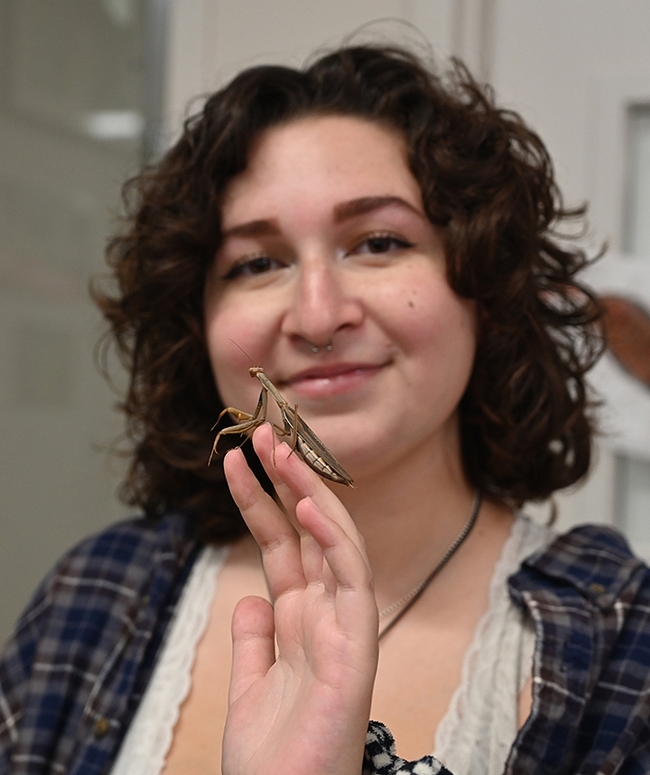
"Grasshoppers, Crickets and Katydids." Talk and a question-and-answer forum from 1 to 2 p.m. Open museum, 2 to 4 p.m. Heading the event is UC Davis undergraduate student Sol Wantz, a senior majoring in entomology and a member o the lab of community ecologist and professor Neal Williams. She serve as president of the UC Davis Entomology Club.
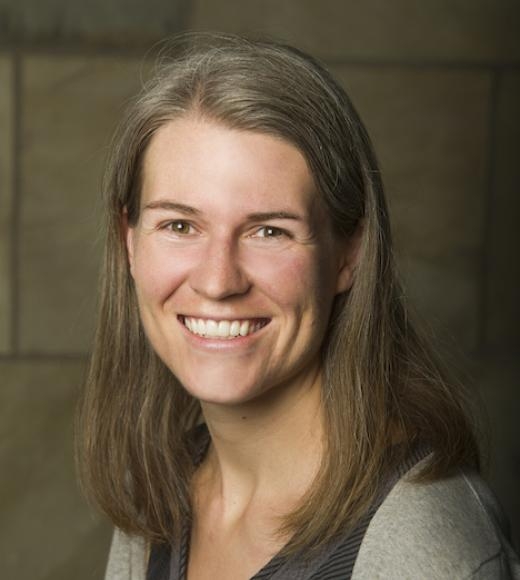
110th UC Davis Picnic Day, all day. This is billed as the largest student-run event in the country. It is UC Davis' annual open house with hundreds of free and family friendly events. Entomology displays, exhibits and activities planned by the Department of Entomology and Nematology will be at the Bohart Museum and at Briggs Hall.
Sunday, May 19:
"Bees: Both Wild and Managed," 1 to 4 p.m. Presenters will include community ecologist Rachel Vannette, associate professor and vice chair of the UC Davis Department of Entomology and Nematology.
The Bohart Museum, founded in 1946, is located in Room 1124 of the Academic Surge Building, 455 Crocker Lane, UC Davis campus. It houses a global collection of eight million insect specimens, plus a live petting zoo (including Madagascar hissing cockroaches, stick insects, and tarantulas) and a insect-themed gift shop, stocked with t-shirts, hoodies, jewelry, books, posters, pens, and more.
The Bohart Museum is open to the public Monday through Thursday. Casual walk-in hours are from 9 a.m. to noon and from 1 to 5 p.m. Pre-arranged tours (schools, scouts, UC classes) may also occur during these times. The museum will be closed for the winter holiday break, Dec. 23-Jan. 1. More information is on the website or by contacting bmuseum@ucdavis.edu. Tabatha Yang serves as the education and outreach coordinator, and Brennen Dyer as the collections manager.
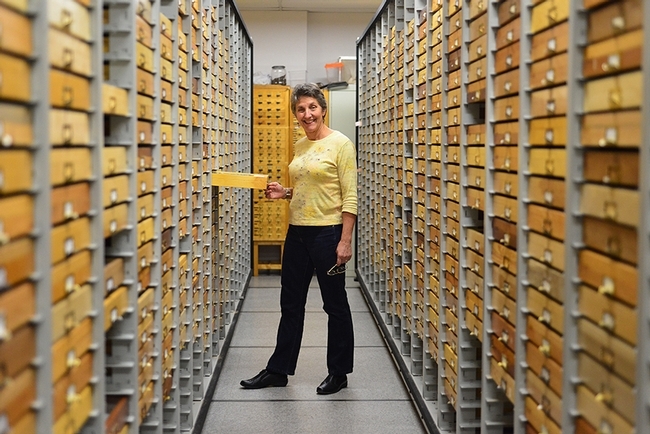
- Author: Kathy Keatley Garvey
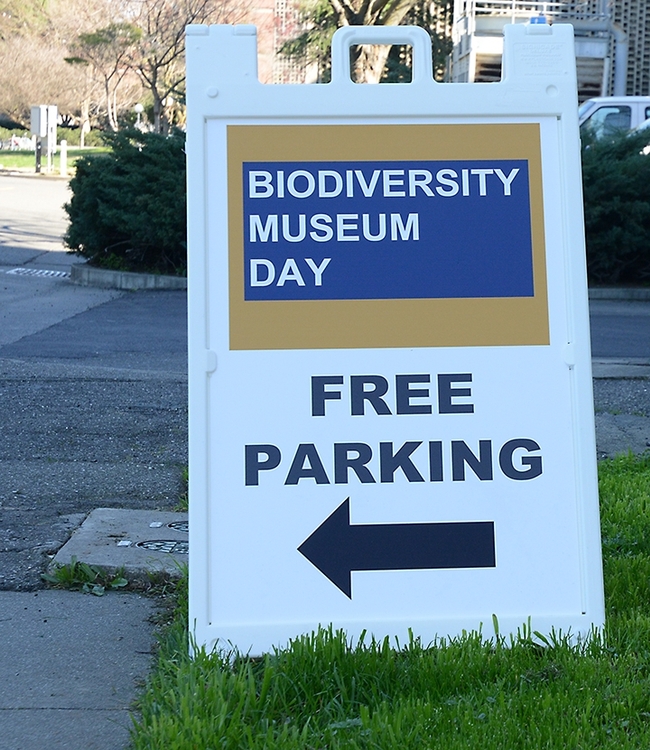
The committee recently settled on the date. The inaugural event took place during the Presidents' Day weekend.
The museums and collections will participate at their various sites on campus. They will include Phaff Yeast Culture Collection, Bohart Museum of Entomology, Museum of Wildlife and Fish Biology, Arboretum and Public Garden, California Raptor Center, Earth and Planetary Sciences Paleontology Collections, Botanical Conservatory, Center for Plant Diversity, Nematode Collections, Marine Invertebrate Teaching Collection. and Department of Anthropology Museum.
"Each year more than 200 volunteers--students, staff and faculty--from across campus help more 4,000 visitors--including other UC Davis students, staff and faculty--learn about biodiversity through our amazing biological collections," said UC Davis Biodiversity Museum Day chair Tabatha Yang, education and outreach coordinator for the Bohart Museum of Entomology.
Yang, with Brennen Dyer, collections manager for the Bohart Museum and Melissa Cruz Hernandez, outreach and leadership program manager for the UC Davis Arboretum and Public Garden, recently coordinated a Crowdfunding project raising funds for the event.
- Author: Kathy Keatley Garvey
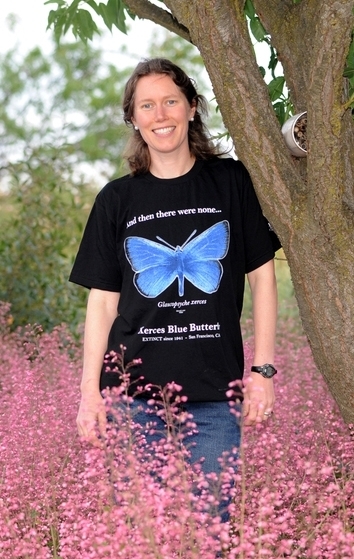
It will take place Saturday, Feb. 10 on the UC Davis campus.
Participating collections include, but are not limited to, the Phaff Yeast Culture Collection, Bohart Museum of Entomology, Museum of Wildlife and Fish Biology, Arboretum and Public Garden, California Raptor Center, Earth and Planetary Sciences Paleontology Collections, Botanical Conservatory, Center for Plant Diversity, Nematode Collections, Marine Invertebrate Teaching Collection. and Department of Anthropology Museum.
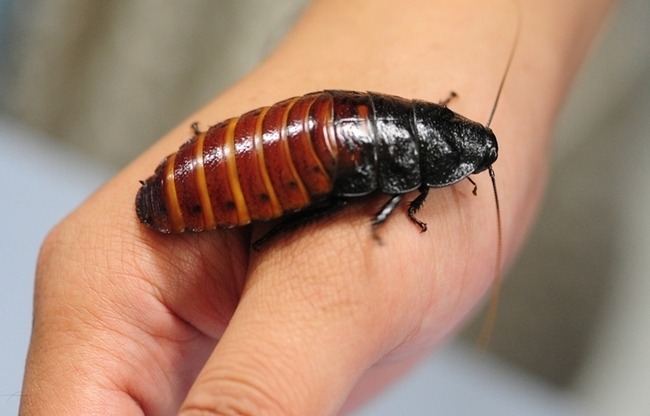
Donations, from $5 on up, may be made at this website: UC Davis October Crowdfund campaign. It costs approximately $5000 to finance the Biodiversity Museum Day, the committee related. Donors may make contributions to honor a loved one or a favorite organism, such as a praying mantis, plant, nematode or fossil. The crowdfunding campaign ends at 11:59 p.m.,Tuesday, Oct. 31.
The committee asks that you:
- Share the news with three friends/co-workers
- Post on your social media. The UC Davis Crowdfund has links for Facebook, LinkedIn and Twitter (or X)
- Donate here
Coordinating the UC Davis October Crowdfund campaign are Yang; Brennen Dyer, collections manager for the Bohart Museum; and Melissa Cruz Hernandez, outreach and leadership program manager for the UC Davis Arboretum and Public Garden.
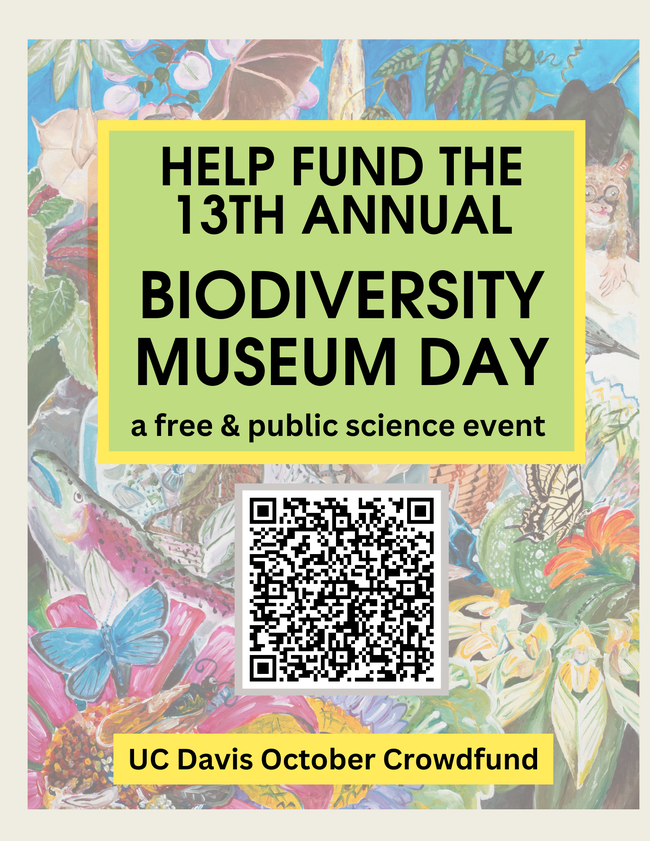
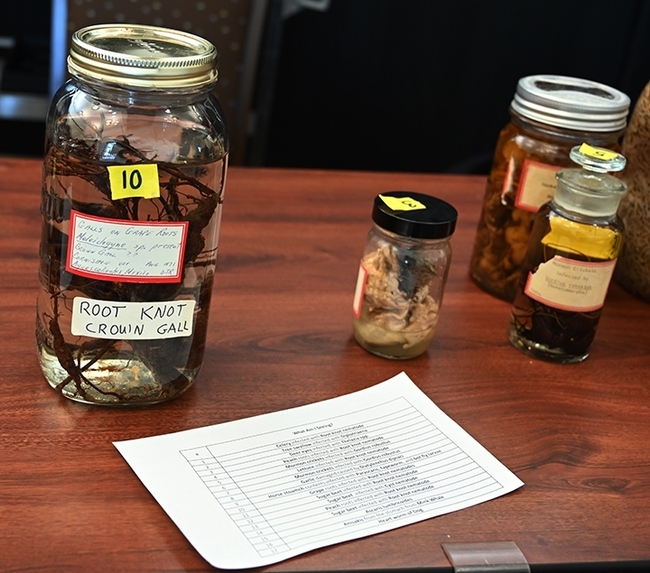
- Author: Kathy Keatley Garvey
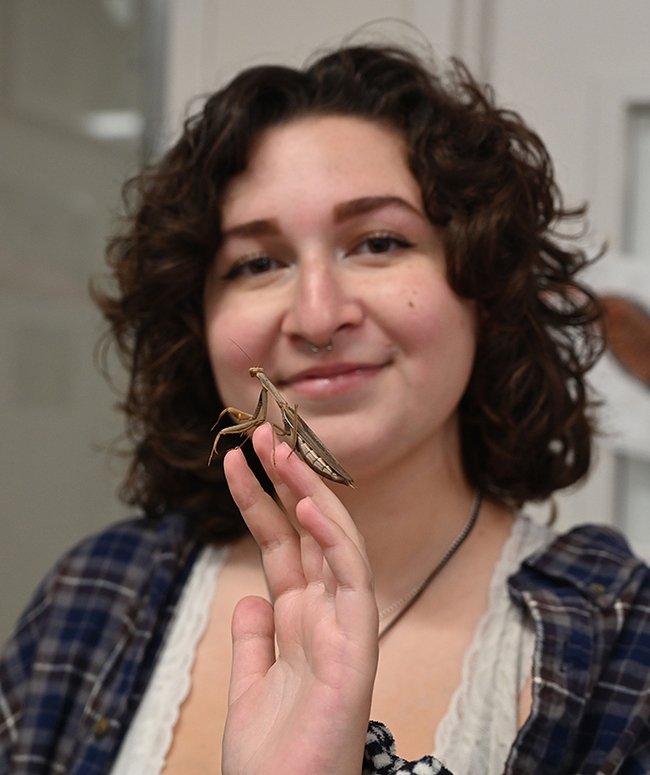
The open house, held from 1 to 4 p.m., Sunday, Aug. 27, drew guests of all ages.
Tabatha Yang, the Bohart Museum's education and outreach coordinator, wore a green mantis costume to greet guests and show them the Madagascar hissing cockroaches and stick insects in the live petting zoo.
UC Davis alumnus Kevin Murakoshi of Davis arrived to gift the museum with intricate origami mantises that he crafted from "mantis-green" paper--one sheet per mantis. Murakoshi, a former UC Davis employee (computer research specialist) is the principal solutions architect at Amazon Web Services.
Photographer Ian Alexander Levin of Sacramento displayed his enlarged images of mantises, including one of a mantis eating a bee that drew "oohs" and "aahs." He owns a child day care center in Sacramento and likes to share his finds in the "Critter Corner" of the center. Levin is the administrator of the Facebook page, SacraMantis.
Skylar Primavera, who studied praying mantises while attending UC San Barbara (bachelor's degree in biology, 2020) displayed a live mantis as well as life-cycle models (ootheca to the adult), and answered questions about the predatory insect.
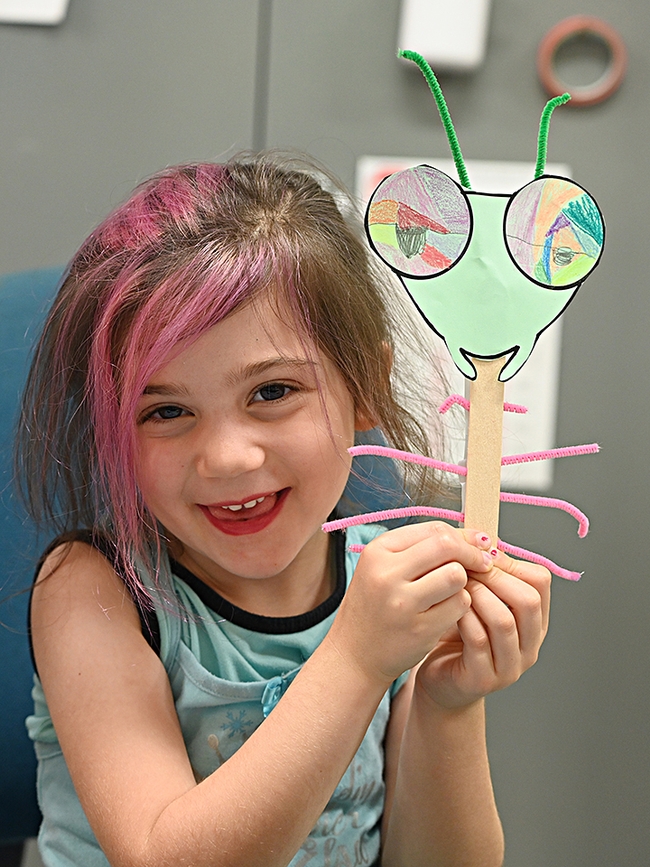
Melody Ruiz, a third-year entomology student, coordinated and staffed the family arts-and-crafts table, featuring "Mantis on a Stick." Using a green paper cutout of a mantis head attached to a popsicle stick, the budding artists colored the compound eyes and added pipe cleaners and other decorations as finishing touches.
Lynn Kimsey, director of the Bohart Museum, and Brennen Dyer, collections manager, welcomed the crowd and answered questions. The Lepidoptera crew of Jeff Smith (curator of the Lepidoptera collection), Greg Kareofelas and Brittany Kohler showed guests assorted butterfly specimens collected world-wide.
A computer screen showcased the work of UC Davis doctoral alumnus Alex Wild, curator of entomology at the University of Texas, Austin, and Kathy Keatley Garvey, communications specialist, UC Davis Department of Entomology and Nematology.
Guests viewed display drawers of both native and non-native mantises. At least 9 species of mantises in California, according to one display.
Five are native:
- The Arizona or bordered mantid (Stagmomantis limbata)
- Bistanta mexicana
- California mantid (Stagmomantis wheeleri=S. californica)
- Litaneutria ocularis=Litaneutria obscura
- Small gray mantid (Litaneutria pacfica)
Four are introduced:
- Chinese mantid (Tenodera sinensis)
- European mantid (Mantis religiosa)
- Mediterranean mantid (Iris oratoria)
- South African mantid (Miomantis caffra)
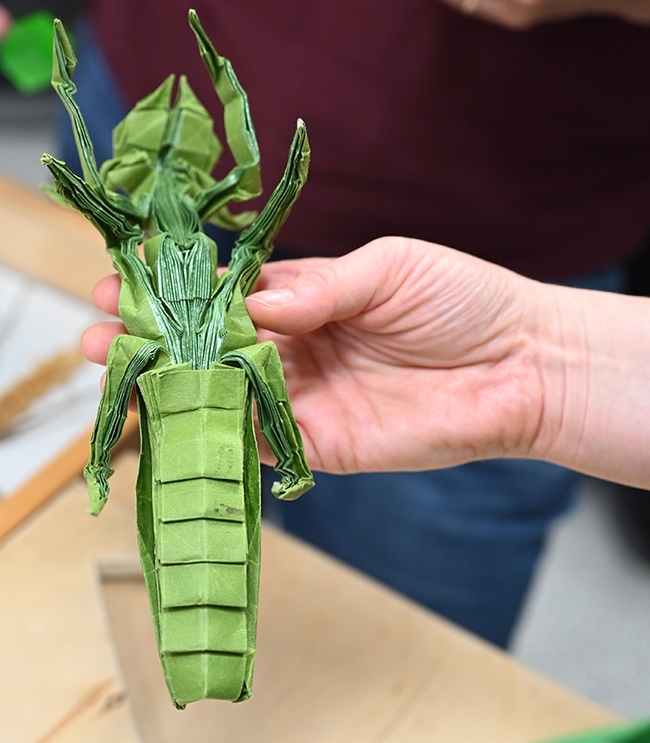
The Bohart Museum, located in Room 1124 of the Academic Surge Building, 455 Crocker Lane, UC Davis, houses a global collection of eight million insect specimens, plus a live petting zoo and an insect-themed gift shop, stocked with t-shirts, hoodies, books, posters, jewelry, collecting equipment and more.
Professor and renowned entomologist Richard Bohart (1913-2007), a member of the UC Davis Department of Entomology (now the Department of Entomology and Nematology) faculty for more than 50 years, founded the museum in 1946.

